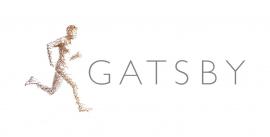Gravity
Gravity can be a difficult concept for students to visualise, as only its effects can be observed. However, contextualising the learning and linking it to real life applications can make this topic exciting. Included here are links to careers, BMX stunts and the effects of gravity in space.
The resources are linked to the following statement in the curriculum:
"Gravity force, weight = mass x gravitational field strength (g), on Earth g=10 N/kg, different on other planets and stars; gravity forces between Earth and Moon, and between Earth and Sun (qualitative only)"
Visit the secondary science webpage to access all lists: https://www.stem.org.uk/secondary-science
Whilst this list provides a source of information and ideas for experimental work, it is important to note that recommendations can date very quickly. Do NOT follow suggestions which conflict with current advice from CLEAPSS, SSERC or recent safety guides. eLibrary users are responsible for ensuring that any activity, including practical work, which they carry out is consistent with current regulations related to Health and Safety and that they carry an appropriate risk assessment. Further information is provided in our Health and Safety guidance.
- ALL
- Teacher guidance
- Video
- Activity sheet
- External link
Teacher guidance
Earth in Space 11-14
Gravity is a topic full of misconceptions and teachers who lack confidence in this topic will greatly appreciate the structure offered by this resource from the Institute of Physics and will want to take the opportunity to read around the subject a little.
Beam Hanging is an excellent introduction to the idea of gravity and would make a super lesson starter. It will challenge students to think through exactly what they mean when they talk about gravity.
Follow this up with the Tins of Beans activity where students experience the weight of tins on different planets. This practical work will help make clear the difference between mass and weight. There is the opportunity to introduce students to simple and more complex calculations and think about the units used. Note that the activity uses 200g tins of beans. If teachers want to use the more standard 415g size then the weights will need scaling up appropriately.
Video
Career Clips: Forces and motion in computer games *suitable for home teaching*
From the Institute of Physics, this seven minute film showcases how an understanding of forces and motion is required to develop certain video games. It looks at the work of a company which develops computer models that ensure objects and people in video games adhere to real world laws of motion. The work is an exciting application of physics and mathematics.
Pearls of Water
This is a visual way of illustrating the effects of gravitational acceleration. The demonstration separates the horizontal and vertical motion of a jet of water as it moves through the air. As the horizontal motion of the water drops remains constant, this demonstrates that there are no horizontal forces acting on the drops (other than negligible air resistance). By contrast, the further along the trajectory you look, the greater the vertical displacement between adjacent drops. This means that the drops are speeding up in the downwards direction - they are accelerating and must have a force acting on them. This force is due to gravity.
Activity sheet
Einstein Flip
This activity communicates the excitement of physics, and shows just how useful it is to understand the laws of physics in extreme sports. Why not use some video clips of BMX stunts (with riders who are wearing the appropriate safety equipment) to introduce the lesson?
To celebrate Einstein Year in 2005, physicist Helen Czerski worked out a new bike stunt and a world class BMX rider dared to try it.
Students can use the information to write an article for a BMX magazine explaining how the stunt works. As an extension, they can use the data provided to calculate whether energy is conserved.
External link
The Earth's gravitational pull
Students readily gain a simple understanding of gravity; this piece of practical work is designed to help them think more deeply about how gravity acts. The experiment is simple to perform so students will not need written instructions.
By imagining gravity as the force from a spring connecting an object to the ground, students examine what happens to the force when the imaginary spring is stretched, ie the object is lifted higher. It is recommended that several sets of equipment are made available so that all students in the class can check the measurements for themselves.
The teacher guidance at the bottom of the page explains why the model is still a good one, even though no change can be detected and goes on to give the example of spacecraft where the force from gravity is significantly smaller.
Circular motion
It is gravity that keeps the Moon in orbit around the Earth and the Earth in orbit around the Sun. The Moon is pulled in towards the Earth and that is what keeps it travelling in a circle. If gravity suddenly disappeared, the Moon would keep travelling in a straight line in whatever direction it was heading at the time – remember a force is needed to change the direction of an object. This is a difficult concept for students and so demonstrations like this one are helpful to get students thinking about circular motion. Ask them what the bung might represent and what the string represents.




